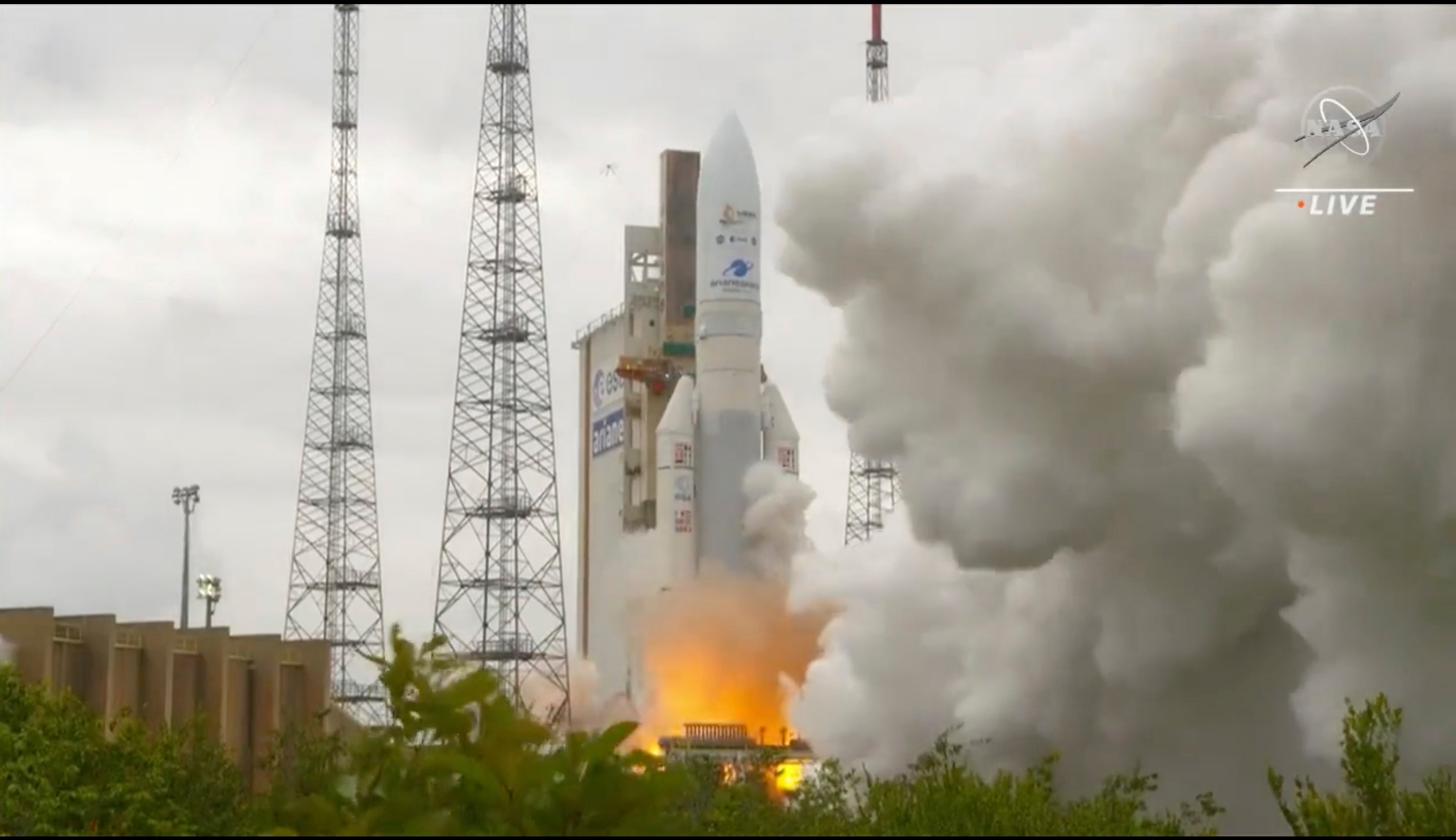What is the James Webb telescope and why is it so important?
The James Webb Telescope successfully launched into space on December 25, but what actually is it?

The most powerful telescope to go into space was successfully launched on Christmas Day.
The James Webb Space Telescope (JWST) was on an Ariane 5 rocket when it left the Kourou spaceport in French Guiana and aims to help to answer unsolved questions about the universe.
– What is the James Webb telescope?
Also known as simply “Webb”, the James Webb Telescope is a space telescope that was launched into space in order to expand scientists’ knowledge of the universe.
The telescope follows the Hubble Space Telescope as the next great space science observatory.
– What does it actually do?
It will be going into space to look back in time, aiming to discover more about the formation of stars and galaxies and to determine how the first galaxies formed.
The telescope has the potential to make breakthroughs in the field of astronomy.
– What is the MIRI and why is it important?
The Mid-Infrared Instrument is a key instrument on the James Webb Telescope, and is able to see the faint light from the most distant stars and can see through dust and gas to spot stars being born.
It also has a spectrograph to break up light into its constituent wavelengths, a camera, and a coronagraph to block starlight and look at fainter objects next to stars.
This data could be used to further understand how galaxies are formed.
– Who was involved in the project?
The mission is led by Nasa the European Space Agency (ESA) and the Canadian Space Agency, but the UK played a major role by leading the European Consortium which, partnered with US institutes, designed, built and tested one of the four main science instruments, the MIRI.
– Why is it so important?
If successful, it will give scientists valuable insight into space matter as it aims to discover details of the mystery substance that makes up the vast majority of matter.
– How long did it take to create?
The project has been in the making since 1996, and was completed in 2016.
It was originally meant to launch earlier in December but due to several setbacks, its departure was delayed.
– How do we benefit from it?
The UK played a big role in the project over the last 25 years, as it had responsibility for the overall design of the MIRI and this could bring in investment.
The MIRI’s science performance, and the mechanical, thermal and optical design, along with the assembly, integration, testing and calibration software was also led by the UK.
Praising the UK’s role in the project, Prime Minister Boris Johnson said: “Today’s launch also shows the enormous value of investing in our science and research base and cementing the UK’s position as a global science superpower – not only to give us a glimpse of galaxies beyond our own but also to support skilled jobs and boost investment here at home.”
Bookmark popover
Removed from bookmarks